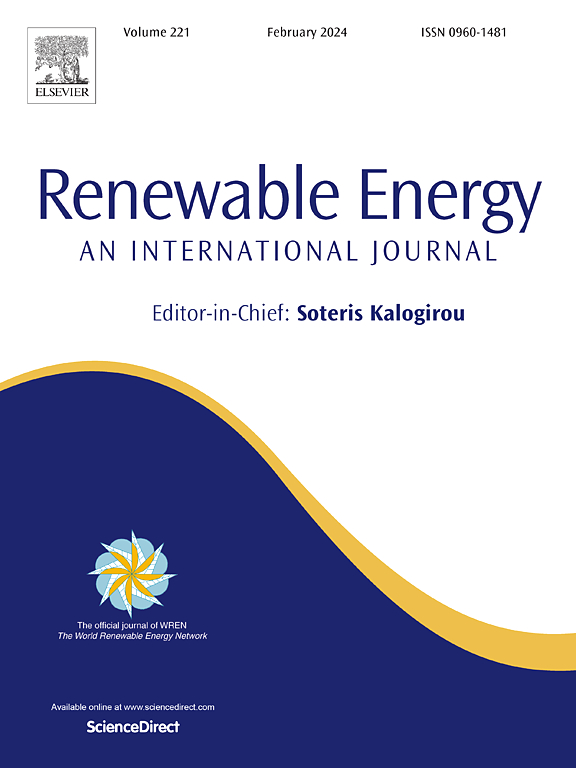Numerical simulation of dust deposition influences on building integrated photovoltaic array
IF 9
1区 工程技术
Q1 ENERGY & FUELS
引用次数: 0
Abstract
Airborne dust deposition on building-integrated photovoltaic (BIPV) modules can significantly reduce the photovoltaic (PV) efficiency. This study aims to investigate the characteristics of dust deposition and its impact on building-integrated photovoltaic array. A validated numerical simulation with a shear stress transport (SST) k-ω turbulence model and a discrete particle model was employed in this study. By systematically manipulating wind velocity and spacing between BIPV modules, the dust deposition rate on the BIPV modules and its concurrent effect on power generation were quantified. The results showed that the accumulation of dust on the front row panels exceeded that on the rear row. Notably, higher wind velocities were associated with reduced photovoltaic power output. The dust deposition rate peaked at 7.17 % for 200 μm particles, then dropped to a minimum of 0.82 % for 600 μm particles. Dust deposition rates on solar panels showed a consistent trend across different roof inclination angles at 16.7° (1.39 %), 22.6° (2.54 %), 36.9° (3.74 %), and 45° (4.58 %). Increased building spacing led to higher dust deposition on the front row, primarily due to gravitational effects. Overall, this study thoroughly examined how dust size, wind velocity, spacing between buildings and the roof inclination of buildings affect dust deposition behaviors.
粉尘沉降对建筑一体化光伏阵列影响的数值模拟
建筑集成光伏(BIPV)组件上的空气粉尘沉积会显著降低光伏(PV)效率。本研究旨在探讨建筑一体化光伏阵列的降尘特性及其对其的影响。采用剪切应力输运(SST) k-ω湍流模型和离散粒子模型进行数值模拟。通过系统地控制风速和组件间距,量化了BIPV组件上的粉尘沉积速率及其对发电的影响。结果表明,前排面板的积尘量大于后排面板。值得注意的是,较高的风速与减少的光伏发电输出有关。当粒径为200 μm时,粉尘沉积率最高,为7.17%;当粒径为600 μm时,粉尘沉积率最低,为0.82%。屋面倾角分别为16.7°(1.39%)、22.6°(2.54%)、36.9°(3.74%)和45°(4.58%),不同倾角下太阳能板上的粉尘沉积率变化趋势一致。建筑间距的增加导致前排的粉尘沉积增多,这主要是由于重力的影响。总体而言,本研究深入研究了粉尘大小、风速、建筑物间距和建筑物屋顶倾角对粉尘沉积行为的影响。
本文章由计算机程序翻译,如有差异,请以英文原文为准。
求助全文
约1分钟内获得全文
求助全文
来源期刊

Renewable Energy
工程技术-能源与燃料
CiteScore
18.40
自引率
9.20%
发文量
1955
审稿时长
6.6 months
期刊介绍:
Renewable Energy journal is dedicated to advancing knowledge and disseminating insights on various topics and technologies within renewable energy systems and components. Our mission is to support researchers, engineers, economists, manufacturers, NGOs, associations, and societies in staying updated on new developments in their respective fields and applying alternative energy solutions to current practices.
As an international, multidisciplinary journal in renewable energy engineering and research, we strive to be a premier peer-reviewed platform and a trusted source of original research and reviews in the field of renewable energy. Join us in our endeavor to drive innovation and progress in sustainable energy solutions.
 求助内容:
求助内容: 应助结果提醒方式:
应助结果提醒方式:


